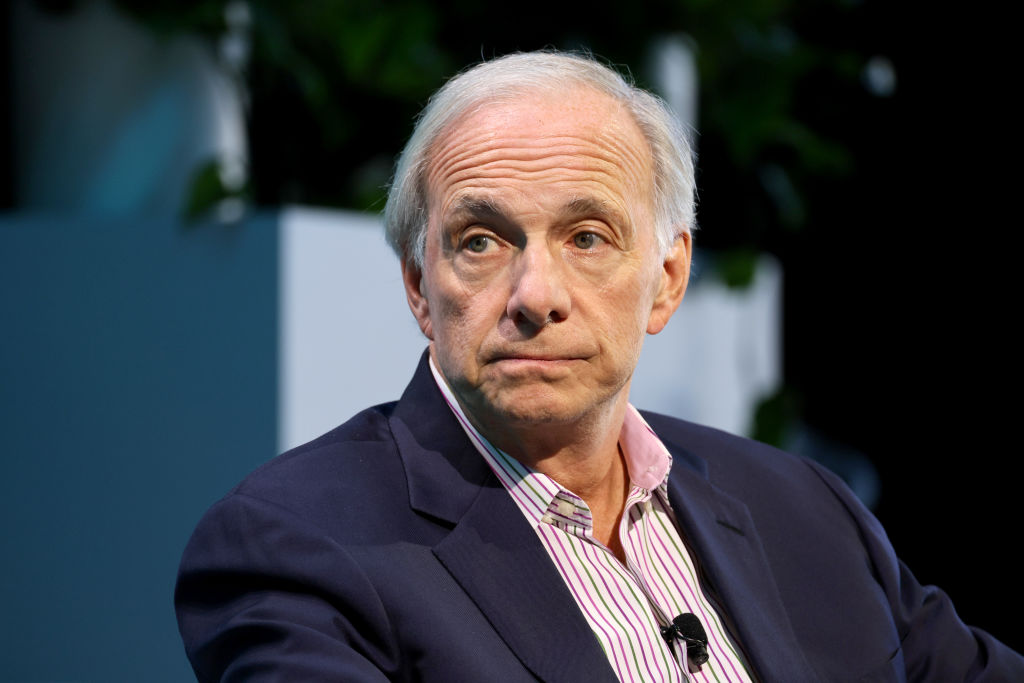A Spotlight on the Plains States: The Kiplinger Letter
The labor market is tight in the Plains states and outside of healthcare and construction most sectors are flat or down.


To help you understand what is going on in the economy our highly experienced Kiplinger Letter team will keep you abreast of the latest developments and forecasts (Get a free issue of The Kiplinger Letter or subscribe). You'll get all the latest news first by subscribing, but we will publish many (but not all) of the forecasts a few days afterward online. Here’s the latest…
Labor markets in the Plains region are still tight, with higher than average job opening rates and labor force participation rates with low unemployment rates. Healthcare is showing a very strong uptrend in all states in the region. Some agricultural prices have been returning to pre-pandemic levels, such as corn, wheat and pork, creating difficulty for farmers whose costs have risen. But soybean prices remain elevated, and beef and chicken prices are still near record highs. Overall 2024 farm income should decline from a drop in crop insurance indemnities. Insurance payments will normalize in 2024 after peaking in 2022 and 2023.
South Dakota will enjoy the fastest job growth among the Plains states, with
1.8%, with a super low unemployment rate of 2.0%. It’s the only state in the region to benefit from net in-migration. Besides healthcare, tech and business services will lead the way. A new convention center is coming to Sioux Falls, but construction may take six years. The huge ethanol industry is pushing for approval of pipelines to carry carbon dioxide generated by ethanol plants, but local opposition has so far blocked those plans. The annual August motorcycle rally in Sturgis continues to attract roughly 600,000 visitors, with four-fifths coming in from outside the state.

Sign up for Kiplinger’s Free E-Newsletters
Profit and prosper with the best of expert advice on investing, taxes, retirement, personal finance and more - straight to your e-mail.
Profit and prosper with the best of expert advice - straight to your e-mail.
Minnesota, with job growth of 1.3%, is next. Construction and healthcare are doing well, but financial firms are struggling. The unemployment rate is 2.9%, and Minnesota has the most job openings in the region. Iron ore shipment levels at Duluth are the highest in nearly three decades. Minneapolis is seeing a surge in office-to-apartment conversions, which could help its struggling downtown area. Rotary International is holding its 2029 worldwide convention in the Twin Cities. 15,000 are expected to attend. Delta, which has a hub at the Twin Cities airport, expects business travel to pick up this year. Business travel on Delta is now at 90% of pre-pandemic level.
Close behind is North Dakota, set for employment growth of 1.2% in 2024. The unemployment rate is a microscopic 1.9%, and jobs are going begging. Oil drilling activity has eased, but the state remains the third-biggest oil producer in the country (after Texas and New Mexico). Construction is flat, due to the drilling slowdown. The portion of a proposed CO2 pipeline ending in North Dakota got the green light from the state’s utility regulator. But opposition in neighboring states could nix it.
Kansas is growing a bit slower with jobs up 1%. Its population growth is the slowest in the region, limiting increases in the labor force. Outside of healthcare and construction, most sectors are flat or down. The recent drought is easing, though. One bright spot is the aviation industry in Wichita, home to Bombardier’s Learjet and Spirit AeroSystems, Boeing's airframe supplier. Spirit was not at fault for the recent issue of the door plug that fell out on a 737-MAX flight, but it is still tied to Boeing's ups and downs. Quickstep, an Australian aerospace firm, plans to open its first U.S. facility in Wichita.
Nebraska is constrained by a tight labor market, with unemployment of 2.3% and projected job growth this year of just 0.8%. Again, the recent drought is easing, and the cattle industry is benefitting from high prices. Food processing in
general will continue to do well. Omaha, long a Midwestern financial center, has lost jobs in the sector for four straight years, but it should be near the bottom. The metro area as a whole has seen steady job growth, though, and a 7,000-seat soccer stadium will anchor the development of an entertainment district
Iowa is in line for the slowest job growth — just 0.5%. Technology and finance are struggling, and drought will continue to weigh on farmers. Pork producers are getting hit with high feed costs and demand that has lagged behind supply growth. But, healthcare, manufacturing and construction are up. Microsoft is building a sixth data center in West Des Moines. A challenge for state decision-makers is whether to approve Iowa’s participation in a regional liquid carbon pipeline proposed by Summit to allow ethanol plants to generate carbon offsets that could be rewarded with billions of dollars in federal tax credits. Half of the state’s corn crop is used to make ethanol, and the state has twelve ethanol producers, but the proposal has met fierce local resistance over safety concerns.
This forecast first appeared in The Kiplinger Letter, which has been running since 1923 and is a collection of concise weekly forecasts on business and economic trends, as well as what to expect from Washington, to help you understand what’s coming up to make the most of your investments and your money. Subscribe to The Kiplinger Letter.
Related Content
- A Spotlight on the Mid-Atlantic States: The Kiplinger Letter
- A Spotlight on the Mid-South States: The Kiplinger Letter
- A Spotlight on the Midwest: The Kiplinger Letter
- A Spotlight on New England: The Kiplinger Letter
- A Spotlight on the Southeastern States: The Kiplinger Letter
- A Spotlight on the South Central States: The Kiplinger Letter
Get Kiplinger Today newsletter — free
Profit and prosper with the best of Kiplinger's advice on investing, taxes, retirement, personal finance and much more. Delivered daily. Enter your email in the box and click Sign Me Up.

David is both staff economist and reporter for The Kiplinger Letter, overseeing Kiplinger forecasts for the U.S. and world economies. Previously, he was senior principal economist in the Center for Forecasting and Modeling at IHS/GlobalInsight, and an economist in the Chief Economist's Office of the U.S. Department of Commerce. David has co-written weekly reports on economic conditions since 1992, and has forecasted GDP and its components since 1995, beating the Blue Chip Indicators forecasts two-thirds of the time. David is a Certified Business Economist as recognized by the National Association for Business Economics. He has two master's degrees and is ABD in economics from the University of North Carolina at Chapel Hill.
-
 Starbucks 2025 Dress Code Changes: See the New Look
Starbucks 2025 Dress Code Changes: See the New LookThe 2025 Starbucks dress code change features a uniformed look as part of creating a more familar and friendly cafe experience.
By Sean Jackson
-
 Ray Dalio Is Ringing Alarm Bells About 'Something Worse Than a Recession'
Ray Dalio Is Ringing Alarm Bells About 'Something Worse Than a Recession'Bridgewater founder Ray Dalio has been sounding off about his concerns for the global economy as a result of tariffs and certain policies, as well as other factors.
By Alexandra Svokos
-
 What DOGE is Doing Now
What DOGE is Doing NowThe Kiplinger Letter As Musk's DOGE pursues its ambitious agenda, uncertainty and legal challenges are mounting — causing frustration for Trump.
By Matthew Housiaux
-
 A Move Away From Free Trade
A Move Away From Free TradeThe Letter President Trump says long-term gain will be worth short-term pain, but the pain could be significant this year.
By David Payne
-
 Trump’s Whirlwind Month of Crypto Moves
Trump’s Whirlwind Month of Crypto MovesThe Kiplinger Letter The Trump administration wants to strengthen U.S. leadership in the cryptocurrency industry by providing regulatory clarity.
By Rodrigo Sermeño
-
 What Could Derail the Economy This Year?
What Could Derail the Economy This Year?The Letter While the outlook for the U.S. economy is mostly favorable, there are plenty of risks that bear watching.
By David Payne
-
 Three Ways President Trump Could Impact the Economy
Three Ways President Trump Could Impact the EconomyThe Letter Some of Trump's top priorities could boost economic growth, but others risk fueling inflation.
By David Payne
-
 10 Predictions for 2025 from The Kiplinger Letter
10 Predictions for 2025 from The Kiplinger LetterThe Kiplinger Letter As 2025 arrives, here are our top 10 forecasts for the new year.
By Letter Editors
-
 Europe Faces Economic and Political Headwinds Next Year
Europe Faces Economic and Political Headwinds Next YearThe Letter Challenges for Europe: Potential tariffs, high energy prices and more competition from China will weigh on the bloc in 2025.
By Rodrigo Sermeño
-
 Don't Sleep on Japan's Economic Transformation
Don't Sleep on Japan's Economic TransformationThe Letter After almost three lost decades, Japan — one of the world's biggest economies — is finally showing signs of life.
By Rodrigo Sermeño